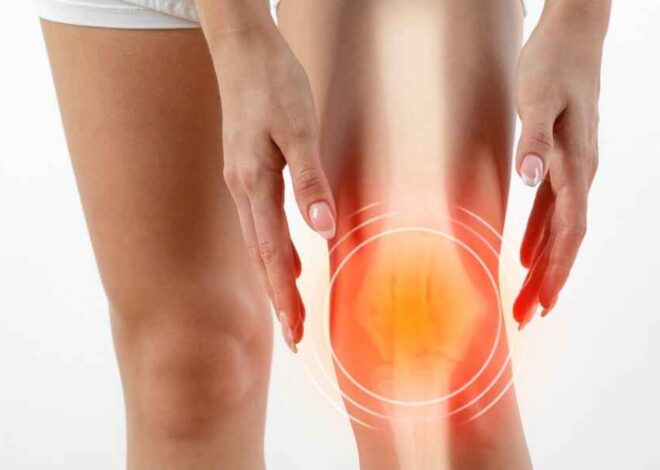
Chiropractic Care for Knee Pain Best Guide 2024
Last updated on December 5th, 2025 at 10:15 pm
Knee pain is a common issue affecting people of all ages, leading to discomfort and limiting daily activities. Chiropractic care offers a non-invasive, drug-free approach to managing and alleviating knee pain. This guide provides a comprehensive overview of how chiropractic care can help with knee pain, including techniques, benefits, and what to expect during treatment.
Read More: 5 Knee Pain Location Chart
Table of Contents
causes and symptoms of Knee Pain
Causes of Knee Pain: Knee pain can stem from various factors, including injuries such as sprains, strains, or tears, as well as degenerative conditions like osteoarthritis or rheumatoid arthritis. Other contributing factors may include overuse, poor posture, or biomechanical issues.
Symptoms of Knee Pain: Symptoms of knee pain can range from mild discomfort and stiffness to severe pain and swelling. Patients may also experience limited range of motion, instability, or difficulty bearing weight on the affected knee.
Chiropractic Care for Knee Pain
Chiropractic care for knee pain focuses on diagnosing and treating musculoskeletal disorders, particularly those related to the spine. Chiropractors use hands-on spinal manipulation and other alternative treatments to improve the alignment of the body’s musculoskeletal structure. This helps the body heal itself without surgery or medication.
Role of Chiropractic Care
Chiropractic Treatment Techniques: Chiropractors use a variety of hands-on techniques to manipulate the spine and other joints in the body, including the knees. These techniques aim to restore proper alignment, reduce inflammation, and alleviate pain.
Benefits of Chiropractic Care for Knee Pain: Chiropractic care can provide several benefits for individuals experiencing knee pain, including pain relief, improved mobility, and enhanced function. By addressing underlying structural issues and promoting natural healing processes, chiropractic treatment offers a non-invasive alternative to surgery or medication.

Conditions Treated by Chiropractors
Common Knee Conditions: Chiropractors commonly treat a range of knee conditions, including ligament injuries, meniscal tears, patellofemoral pain syndrome, and iliotibial band syndrome. They may also address biomechanical imbalances or misalignment contributing to knee pain.
Other Musculoskeletal Conditions: In addition to knee pain, chiropractors can help manage various musculoskeletal conditions affecting the spine, pelvis, hips, and extremities. By addressing underlying issues throughout the body, chiropractic care promotes overall wellness and function.
Effectiveness of Chiropractic Treatment
Research and Evidence: While more research is needed, several studies have shown promising results regarding the effectiveness of chiropractic care for knee pain. Research suggests that chiropractic adjustments, combined with exercise therapy and other modalities, can significantly reduce pain and improve function in patients with knee osteoarthritis and other knee conditions.
Patient Testimonials: Many individuals have reported positive experiences with chiropractic treatment for knee pain, citing reduced pain levels, improved mobility, and enhanced quality of life. Patient testimonials provide anecdotal evidence supporting the effectiveness of chiropractic care as a treatment option.
Considerations Before Seeking Chiropractic Care
Consultation with Healthcare Provider: Before seeking chiropractic care for knee pain, it is important to consult with a healthcare provider to rule out serious underlying conditions and ensure that chiropractic treatment is appropriate for your specific needs.
Understanding Chiropractic Approach: It is also essential to have a clear understanding of the chiropractic approach to healthcare, including the goals of treatment and potential risks and benefits. Open communication with your chiropractor can help ensure a collaborative and effective treatment plan.
What to Expect During Chiropractic Treatment
Initial Assessment: During your initial visit, your chiropractor will conduct a comprehensive evaluation, including a review of your medical history, a physical examination, and possibly diagnostic tests or imaging studies. This assessment helps identify the underlying cause of your knee pain and guides treatment planning.
Treatment Sessions: Subsequent treatment sessions may involve chiropractic adjustments, soft tissue therapy, rehabilitative exercises, and lifestyle recommendations. Your chiropractor will tailor treatment to address your specific needs and goals, to reduce pain, restore function, and improve overall well-being.
FAQs (Frequently Asked Questions):
- Can chiropractors help with knee pain?
Yes, chiropractors can provide relief for knee pain by addressing underlying structural issues, promoting natural healing processes, and restoring proper joint function.
- What types of knee conditions can chiropractors treat?
Chiropractors commonly treat a range of knee conditions, including ligament injuries, meniscal tears, osteoarthritis, and patellofemoral pain syndrome.
- How effective is chiropractic treatment for knee pain?
While more research is needed, several studies have shown promising results regarding the effectiveness of chiropractic care for knee pain, with many patients reporting reduced pain levels and improved function.
- Is chiropractic treatment safe for knee pain?
Chiropractic treatment is generally considered safe when performed by a qualified and experienced practitioner. However, it is important to consult with a healthcare provider to ensure that chiropractic care is appropriate for your specific condition.
- How many chiropractic sessions are needed for knee pain?
The number of chiropractic sessions required for knee pain depends on the severity and underlying cause of the pain, as well as individual response to treatment. Your chiropractor will develop a personalized treatment plan based on your specific needs and goals.
- What can I expect during a chiropractic treatment session for knee pain?
During a chiropractic treatment session, you can expect a combination of hands-on techniques, such as chiropractic adjustments and soft tissue therapy, as well as rehabilitative exercises and lifestyle recommendations tailored to address your knee pain.
- Are there any risks associated with chiropractic treatment for knee pain?
While rare, potential risks of chiropractic treatment for knee pain may include soreness, stiffness, or exacerbation of symptoms. It is important to discuss any concerns with your chiropractor before starting treatment.
- Can chiropractic care prevent knee pain?
While chiropractic care cannot always prevent knee pain, it can help address underlying biomechanical issues, improve joint function, and reduce the risk of future injury, thereby potentially decreasing the likelihood of developing knee pain in the future.
Conclusion
In conclusion, chiropractic care offers a holistic approach to managing knee pain, addressing underlying structural issues, and promoting natural healing processes. By utilizing hands-on techniques and personalized treatment plans, chiropractors can effectively alleviate pain, improve mobility, and enhance the overall quality of life for individuals with knee pain.
Reference Chiropractic Care for Knee Pain


